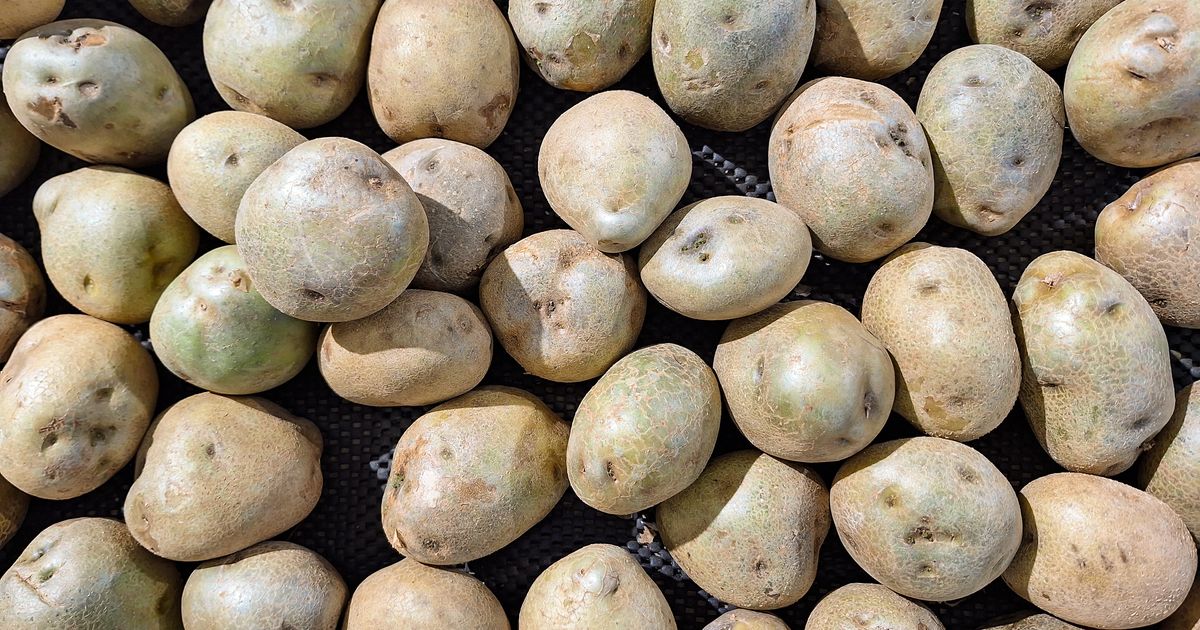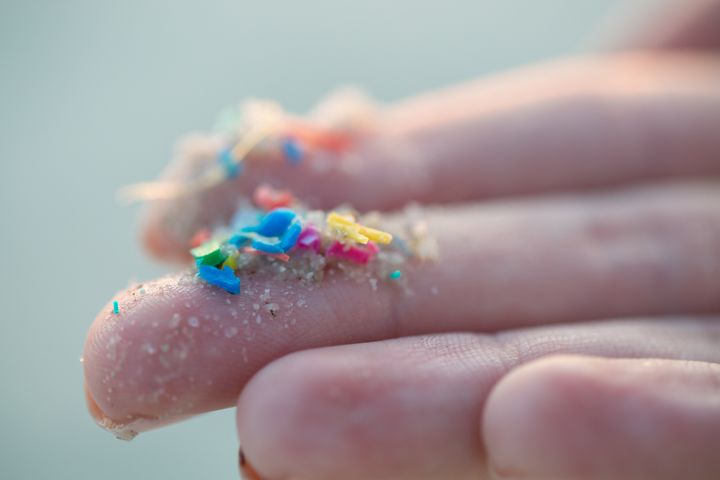Trees, grass, weeds, pollen and mould are just a few of the things that people who experience seasonal allergies are constantly doing their best to dodge.
Those who are allergic to these plants know that sneezing, congestion and red, itchy eyes are some of the hallmark symptoms they experience when coming into contact with them. “However, seasonal allergies can cause some weird signs that a lot of time patients do not associate with seasonal allergies,” said Dr. Duyen Nguyen, an allergist at Memorial Hermann Health System in Houston, Texas.
Advertisement
From snoring to feeling like you’re going to tip over, here are 14 lesser-known signs that you may be suffering from allergies.
1. Bad Breath
That bad taste in your mouth might not be from food. It could be due to all the pollen in the air.
“When too much nasal discharge slides down the back of the throat, patients can feel nausea and even vomit,” said Nguyen. This, he explained, can give bacteria in the mouth and throat a place to multiply, leading to characteristic bad breath.
2. Dizziness
Feeling like you’re going to fall down, and not able to blame it on having too much fun at happy hour? Your allergies may be the culprit. A constant mucus build up in the Eustachian tubes, which connect between the mouth and inner ear, can create pressure inside the ears. This can potentially lead to chronic ear pain or cause you to feel off balance, according to Nguyen.
3. A Loss Of Smell
In recent years, we’ve come to associate a loss of smell with a COVID-19 infection, but it may also be due to allergies.
Advertisement
“Seasonal allergic patients can sometimes present with anosmia, which is the partial or full loss of smell,” said Nguyen. This, he added, can occur when mucous membranes in the nose are significantly irritated or obstructed.
4. Exhaustion
Feeling a little bit more exhausted than usual? Not getting enough restful sleep could be due to allergy symptoms keeping you up at night.
“In addition to allergy symptoms impacting the quality of sleep, they can also exacerbate sleep issues like sleep apnea, which can also impact the quantity of sleep,” said Dr. Julie Wendt, a tripled-board-certified allergist and immunologist at Relieve Allergy, Asthma & Hives in Scottsdale, Arizona.
It could also be due to what allergists refer to as “allergy fatigue syndrome.” Fighting off allergies all day can make your body exhausted, thus leaving you with a lot less energy throughout the day, said Dr. Robert Eitches, an allergist at Tower Allergy in Beverly Hills, California.
5. Concentration Problems
“With allergies, many people report brain fog, difficulty concentrating, and even some symptoms of ADHD,” said Eitches. He attributed this to your body expending energy on other things like rubbing your nose or eyes, which causes a loss of the expendable energy needed to focus.
Advertisement
“There have been studies that indicate that people with allergies have a higher likelihood to have ADHD than the general population,” Eitches added. One study found “strong evidence for the link between allergy and ADHD,” noting that “patients with allergy have a 30–50% greater risk of developing ADHD.”
6. A Sore Throat
While a sore throat can be a symptom of a virus, like the common cold or flu, it could also be an indicator that the body is fighting off seasonal allergies. “This is due to the increased mucus production in the body causing postnasal drip, the main instigator of a sore throat,” Wendt said.
In addition to post-nasal drip, Wendt warned that a sore throat could be due to the increased usage of antihistamines causing excessive dryness. And increased sneezing and coughing from postnasal drip is also a symptom that can lead to irritation in the throat.
7. Snoring
While common sleep disorders like sleep apnea can lead to excessive snoring, increased congestion could also be the culprit. “Nasal congestion from allergy symptoms increases snoring as it restricts the airways, impacting the quality of sleep overall,” Wendt explained.
Overall, untreated allergies can lead to chronic sleep disruptions and have a long-term impact on health, leading to higher blood pressure, heart failure and weight gain.
Advertisement

mixetto via Getty Images
8. Voice changes
Clearing your throat or other off sounds can be another sign of allergies.
“Clucking ― imagine Daffy Duck ― is a way to rub the back of the roof of the mouth, where the allergy cells are located, just as you would scratch an itch,” Eitches said. “Oftentimes people are clucking subconsciously.”
9. Unexplained Headaches
Increased sinus pressure from congestion just may be the reason behind your unexplained headaches. Sinus headaches are usually localised to the forehead and cheeks, often leaving the area tender and are usually the worst in the morning, due to the pressure build up from lying flat all night and often become less intense as the day progresses.
“This is due to the sinus cavities swelling, blocking any drainage that could relieve pressure,” Wendt said.
10. Rashes
Seasonal allergies can cause flare-ups of chronic skin conditions like eczema due to increased inflammation.
Advertisement
“Some individuals might also develop itching and rashes after direct contact with an allergen,” Wendt said. “This is often seen in the summer when kids are playing outside in the grass and develop raised, itchy rashes after spending time outside.”
11. Odd Mannerisms
Many people try to relieve their allergies through what others perceive as tics or other mannerisms.
“One such mannerism is what I call the allergic salute,” Eitches said. “This is when someone tries to relieve their allergies by pushing up on the tip of their nose with the heel of their hand. You’ll often see someone use their index finger to push on their ear.”
12. An Itchy Tongue
Your mouth or tongue gets itchy while eating a certain food, but that doesn’t mean you are allergic to that food. It could mean that the food cross-reacts with another allergen, Eitches said. One example is ragweed and bananas. This is known as oral allergy syndrome (OAS) and occurs when patients with seasonal allergic rhinitis eat a fruit, vegetable, spice or nut that cross-reacts. It can typically be quelled by cooking the food.
13. Achy Joints
Seasonal allergy symptoms can be accompanied by general inflammation as the body tries to get rid of the allergens causing the reaction, which can lead to painful swelling of the joints and soreness in the body as it tries to fight off the irritant.
Advertisement
“This inflammation, combined with the fatigue from poor sleep and changes in the weather that bring on allergy season can lead to frequent joint pain,” Wendt explained.
14. Ear-Ringing
Ringing in the ears can occur from pressure buildup from congestion, which can block the Eustachian tubes, causing inflammation and irritation.
“Those suffering from seasonal allergies also have an increased risk for ear infections as the ear does not have the ability to properly drain any excess fluid,” Wendt said. “Research has also shown that patients who experience seasonal allergies are significantly more likely to have Eustachian tube dysfunction, another leading cause of tinnitus.”
This can also lead to ear pain, a feeling of fullness, and sounds like popping and crunching in the ear as well as decreased hearing. And some studies have found that allergy medication may cause ear-ringing as a side effect. If you experience this, it is definitely something to bring up to your doctor.
If you’re experiencing any of these symptoms ― or the classic signs of your body combating allergens ― the good news is there are many ways to find reprieve. To start, make an appointment with an allergist to get tested to see what you’re allergic to.
Advertisement
“In general, allergies symptoms or signs, either common or uncommon, are treated by strict allergens avoidance, over-the-counter medications including oral antihistamines, nasal steroid sprays and decongestants,” Nguyen said.
If symptoms are not well controlled with medications, allergy shots may be beneficial.





!["[Hermeneutic labour] can make the relationship stronger because it helps with communication, but it’s important to remember that this effort by women should be appreciated and not just expected," Chappell Marsh said.](https://www.wellnessmaster.com/wp-content/uploads/2024/04/all-that-time-youre-spending-deciphering-mens-texts-finally-has-a-name-5.jpg)


























